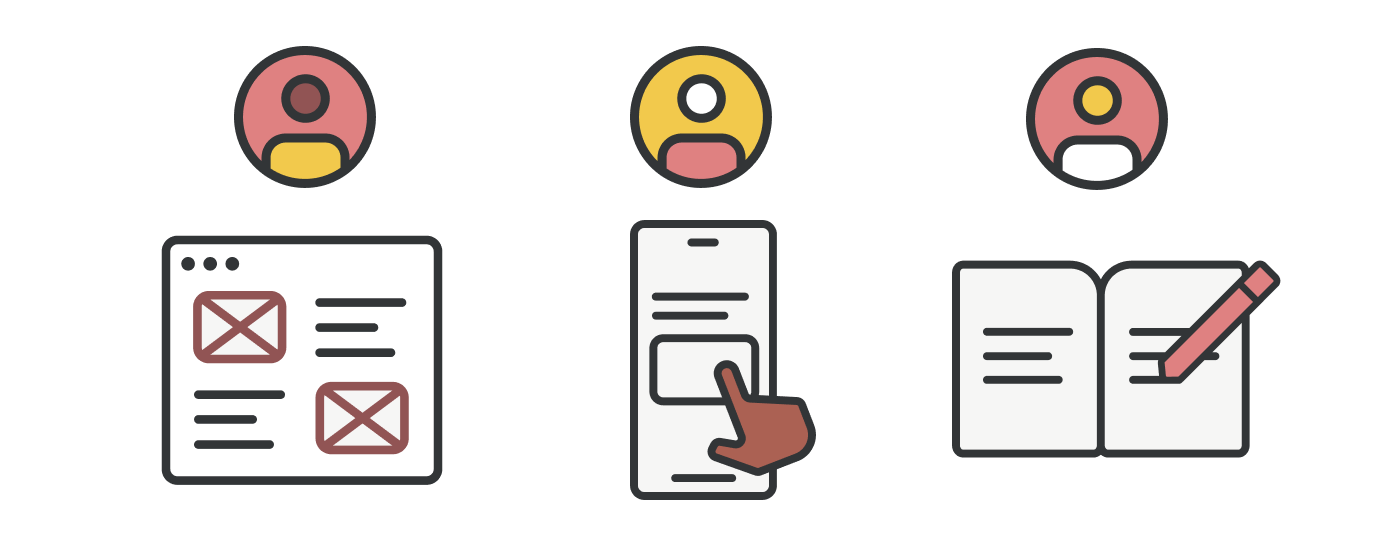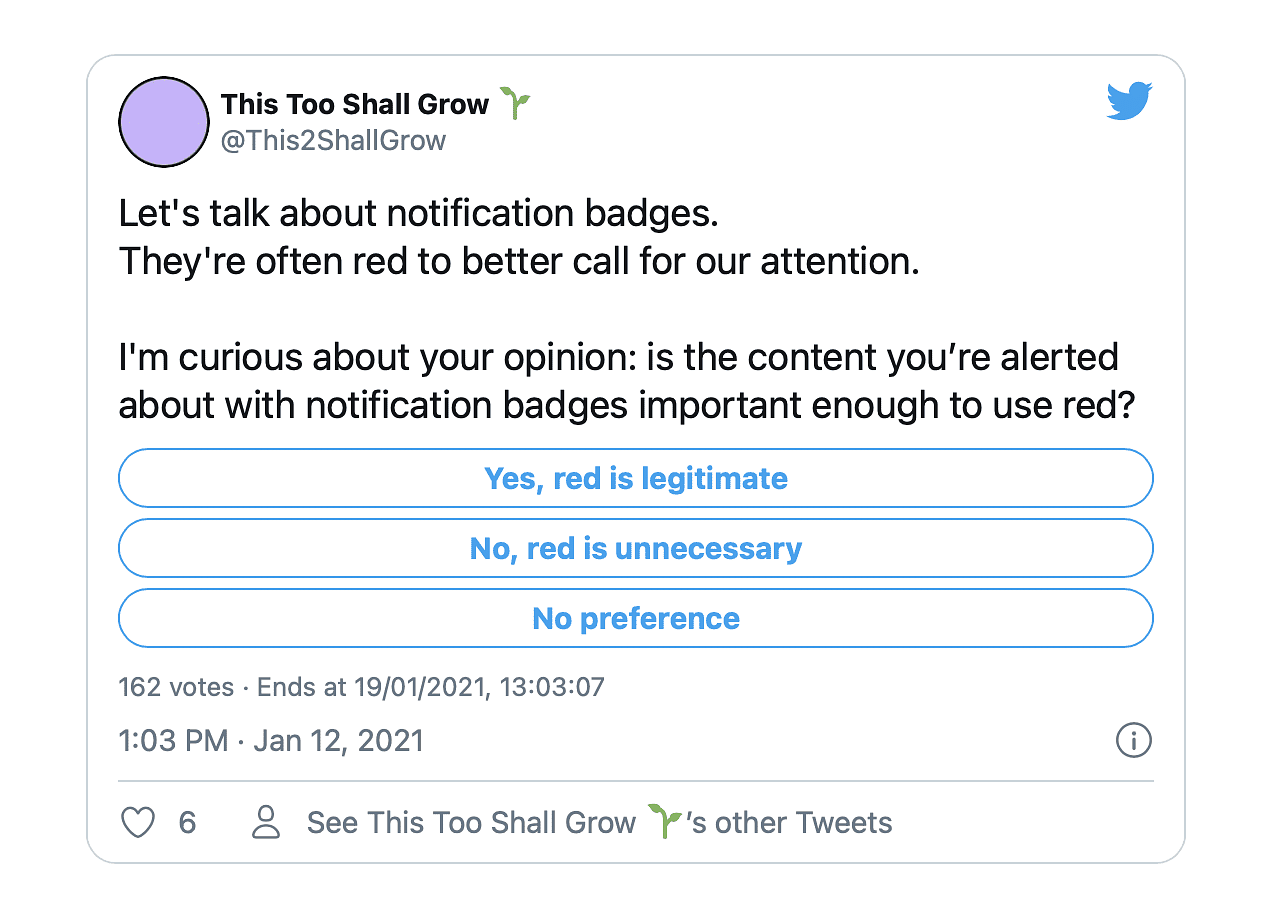In UX research, finding participants can often stand in the way of getting to your next big breakthrough.
Have you ever run into any of these problems?
- Low or no budget for research
- Falling behind the development team when you try to do research
- Not knowing where to find research participants
- Low response rate from customer outreach
- Participants not matching your target customer
How many of those problems would be solved if you instantly had people to talk to every time you spun up a new research project?
Let’s explore ways to cut down on the time, effort, and money it takes to recruit research participants. We’ll look at quick and scrappy techniques, leveraging relationships, and using automation.

Quick and scrappy recruiting techniques
These are the fastest, cheapest research recruiting techniques possible. No matter the size of my company or team, I still use these techniques to find participants when I need a quick feedback loop. Use these when you need on-the-spot, instant feedback with almost no advance notice.
Depending on the circumstances, these scrappy techniques may not be very accurate sources of feedback. They’re usually best reserved for general usability testing and first impressions, not in-depth contextual interviews. At the very least, you’ll get the fresh opinion of someone who has never seen your design before.

Letter
Quick internal recruiting
A constant source of feedback can be found in your own teammates and co-workers, preferably who aren’t on the product team. There are several benefits to this type of rapid internal feedback:
- You can make a good first impression for the UX team, and offer to be a partner when they’re talking to customers or receiving feedback.
- The participants get to meet someone new outside of their team (could be you!).
- Depending on the person, they may not have much exposure to the product (common on teams like HR, accounting, office management, etc.) which may ideal for your testing.
- If your company is scaling, you’ll get a new crop of fresh participants every couple of weeks in the form of new hires.
If you have a simple new design, try drawing up a simple UI or wireframe and walking it around your office (or if you’re remote, dial up a few co-workers on Slack). Find people who are distant from the project and ask them if you can take 5 minutes to show them something you’re working on. You may have even better luck if you have a break or lunch area in your office.
Not sure what to say? Try something like this:
Hey _____, good to see you! Do you have a few minutes for me to show you something I’m working on? Just looking for some quick feedback.
This doesn’t have to be spontaneous. You can also ask if you can schedule 10 minutes on their calendar to be more respectful of their time.
Some of the best points of feedback can be your Sales, Support, and Customer Success teams. In a pinch, these teams can serve as a proxy for customer feedback. They usually spend more time than anyone talking to customers, and most can effortlessly surface customer pains and feature requests.
When I talk to these co-workers, I’ll frequently hear my participants say something like, “This is good, but have you considered XYZ? I’ve heard about that a lot from customers.” Even if this feels like a tangent, it’s always good to check your bias.
The new hire recruiting technique
One technique I used as a design manager at Lucidchart was to set up testing sessions with new hires. I usually partnered with my Product Manager to set up quick chats with a few new hires per week. For a fresh perspective, try to catch them before they have any sort of product training as part of the company onboarding process.
Unless you have a very robust pool of research participants, there aren’t many reasons to avoid internal recruiting. I often do quick internal reviews even if I’m testing with external participants just to keep myself moving forward.
Quick external recruiting
External participants can sometimes be gathered just as fast as your internal teammates, but carry significantly less bias about your product. As with any type of research recruiting, watch out for participants who don’t represent your target customer and may send you off in the wrong direction.
To give you some ideas, here are some rapid external participant recruiting techniques:
- If you’re able to, places like coffee shops and malls have plenty of participants to offer. If you’re having trouble getting anyone’s attention, consider snagging a bunch of $5 gift cards from a local shop or restaurant. (Fair warning: one of my product managers did get kicked out of a mall for doing this, so watch your step!)
- I’ll often tap into my network when I need another pair of eyes. I’ve found many designers are willing to swap user tests or pair reviews. Sometimes I’ll offer career advice or portfolio feedback in exchange for a quick test. For rapid recruiting, creativity is key.
- If you’re in an office building, consider making friends with your neighbors. I once carried my laptop down to test a prototype with the receptionist two floors beneath us. She even let us record the interaction so we could show our team where she clicked and how she responded.
- As a last resort, even consider family and friends. Their feedback will come heavily biased so this is probably best for a quick usability test and not much more. I usually only tap into this network when I’ve recently switched jobs and they still don’t really know what I’m working on.
A note about COVID-19
Depending on your area and personal health risks, external recruiting techniques may be difficult right now. Consider your virtual sources (social media, networking, etc.) and try to make the most of it. Otherwise, you may want to keep your rapid recruiting internal or try some of other the ideas further down in this article.
The trick with rapid external recruiting is to get creative and get out of your comfort zone. If this is difficult for you, that’s okay! Not every designer needs to be an extroverted sales person who can approach anyone on the street. Utilize your own unique skills, and consider leveraging relationships or automating your recruiting instead.

Leveraging relationships
If you’re trying to recruiting research participants quickly, it doesn’t have to be informal. You may not realize it, but you probably already have sources of ready-to-go participants that you just haven’t tapped into yet.
Most importantly, leveraging the relationships you already have is entirely free.
The Sales/Support/Success Teams
As I mentioned with internal techniques, I always encourage strong relationships with the Sales, Support, and Customer Success teams within a company (or whoever else handles inbound customer contact). They can be decent research participants in a pinch, but they can also help you find real users.
When discussing recruiting with Varun Murugesan on UX Chats, he pointed out that Sales and Success teams are often in the exact same situation as UX designers when looking for customers to talk to, sell to, and work with. We’re all looking to create relationships, so we should act as partners!
Individuals on these teams can act as advocates and recruiters for your projects. If you have a clear idea of the problem you’re solving and the type of customer you’re looking for, then consider asking these teams to funnel research candidates to you and your team.
To ease the burden, you might want to provide them with a simple email template they can send to introduce you, though passing along the customer’s email or account ID to you might be enough. I’m a big fan of Varun’s recommendation that a Support team member could respond like this:
Sure, I can guide you through that issue today. But I’ve actually been working with my research partners and they’re building something out. Would you like to be instrumental in how this gets changed?
This can be a gold mine of research participants. Many customers will leap at the opportunity to influence the product roadmap in this way.
You can also simply look through the support ticket history. You’re likely to find users who have had problems that are related to what you’re working on, and who would probably be happy to help you fix those problems.
Trusted Tester Groups
If you’re able to support recurring research over time with the same individuals, then one of the best ways to so is through a trusted tester group. A trusted tester is a person who has agreed to talk to you when you have something new to show them. Once you have enough of these, it becomes easy to rotate through them without talking to the same person very often.
Creating a group like this involves contacting people (who may or may not be customers) to establish a long-term commitment to be available when you need a research participant. Depending on the arrangement, you may offer swag, product discounts, or other incentives for participation.
These groups are ideal for rapid research because you already have an established relationship. Forming this group can take more work up front, but gives you a backlog of near-instant research participants. As you find various participants, consider asking them if they would like to be part of your trusted tester group. If you’re able to find participants as you go, this group can begin to build itself.
Your company may already have one of these in the form of a “Customer Advisory Board” or a “Beta Tester Group” that may serve different purposes. If these exist, partner up with the managers of these groups to see if they can help you or share resources.
Be careful not to reuse this group too much to make sure you’re always getting fresh feedback. These participants can be very valuable in the lifecycle of a launch (from alpha to public release) because they watch it grow and use it with you. Consider your needs as a team, and find the trusted tester relationship that works best.
Some ideal sources of trusted testers might be:
- Previous research participants
- Power users (the ones who are always writing in with feature requests)
- Industry experts (who may not be customers, but may be interested in shaping the future of related products)
- Customers who dropped out of the sales pipeline but are still interested in the product’s future
These participants can be great sources of deep product and industry knowledge, but may not represent a fresh perspective for each research effort. In you need a new perspective, automating your research funnel may be your best bet.

Leveraging automation
Automating your research recruiting is exactly what it sounds like: creating an automatic way to recruit participants without having to lift a finger. While some teams may have resources to pay firms and agencies to recruit for you, most teams don’t. That’s where automation comes in.
In my opinion, this type of predictable recruiting is the holy grail of user research. What you’re able to accomplish in this area may also depend heavily on support from other departments, so it won’t be feasible for every team.
Automating a recruiting process involves a few key components:
1. Find the right people
Create a target customer profile. Who are the people you would like to talk to? How do they behave? How can you identify them? If they’re easily identified through product usage, then your engineering or marketing teams may be able to easily create data queries to find these individuals. In our chat, Varun Murugesan cautioned against segmenting by demographics and encouraged segmenting by experience instead.
As you distill those experiences down into data-driven, queries, they will look something like this: “customers who registered within the last 3 months and never returned” or “customers who have checked out 3 times in a week.” These queries could be run daily, weekly, or even monthly. Depending on your research plan, there are various ways to reach out to these individuals.
2. Automated outreach
Some of the more common outreach methods include email and in-product surveys. These messages can be short and direct, mostly just to include a link to sign up for the opportunity to speak with you.
Alternatively, you could run an in-product survey. If the customer meets your criteria, the survey could appear in a corner of the screen with a message like this:
Our product team would love to talk to people like you about improving this page. Would you be available for short call in the next week?
If they indicate they are available, let them know you will send them an email with more details.
While it may not be possible for every team, I once spoke with the VP of Ancestry.com about how they would run surveys to ask customers if they could immediately join a live call together (and the team would gather together to watch live). If your site has a live chat function already enabled, this my be another avenue for instant research.
Your company may also have representation or interest on other platforms as well: social media, Craigslist, Reddit, private forums, etc. If you’re able to have a consistently available sign up link in these areas, that might work too.
3. Scheduling
Any actions included in your outreach should integrate into your calendar (which I’ve usually done with calendly.com). Be sure to find a service that limits the number of sign ups per week so you don’t accidentally find yourself with several dozen sessions in one week.
One of my previous design teams set up this process from start to finish and usually ended up with three or four calls each week. They passed these around the team and let different designers take the calls when they needed feedback. The barrier to entry for research became so low that designers began to plan on research at the start of every project. If you have the software in place to make this happen, it’s definitely worth taking a look.
UX research deserves thoughtful attention and innovation, not corner cutting. The logistical and operational sides of UX research are great candidates for automating. The quicker you’re able to source the right participants, the sooner your team can uncover great insights and get back to what’s most important: improving people’s lives.
If you’re interested in more discussion about efficient research recruiting, check out this episode of UX Chats with Varun Murugasen.
I’m at my third early-stage startup in a row and I’m sharing everything I’ve learned about how to recruit UX research participants quickly and cheaply. A thread 👇 pic.twitter.com/UgYcusXMDw
— UX Tools (@uxtoolsco) August 26, 2021


 Buy me a coffee
Buy me a coffee



